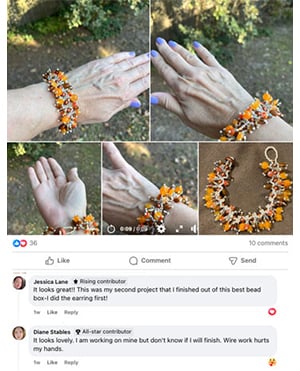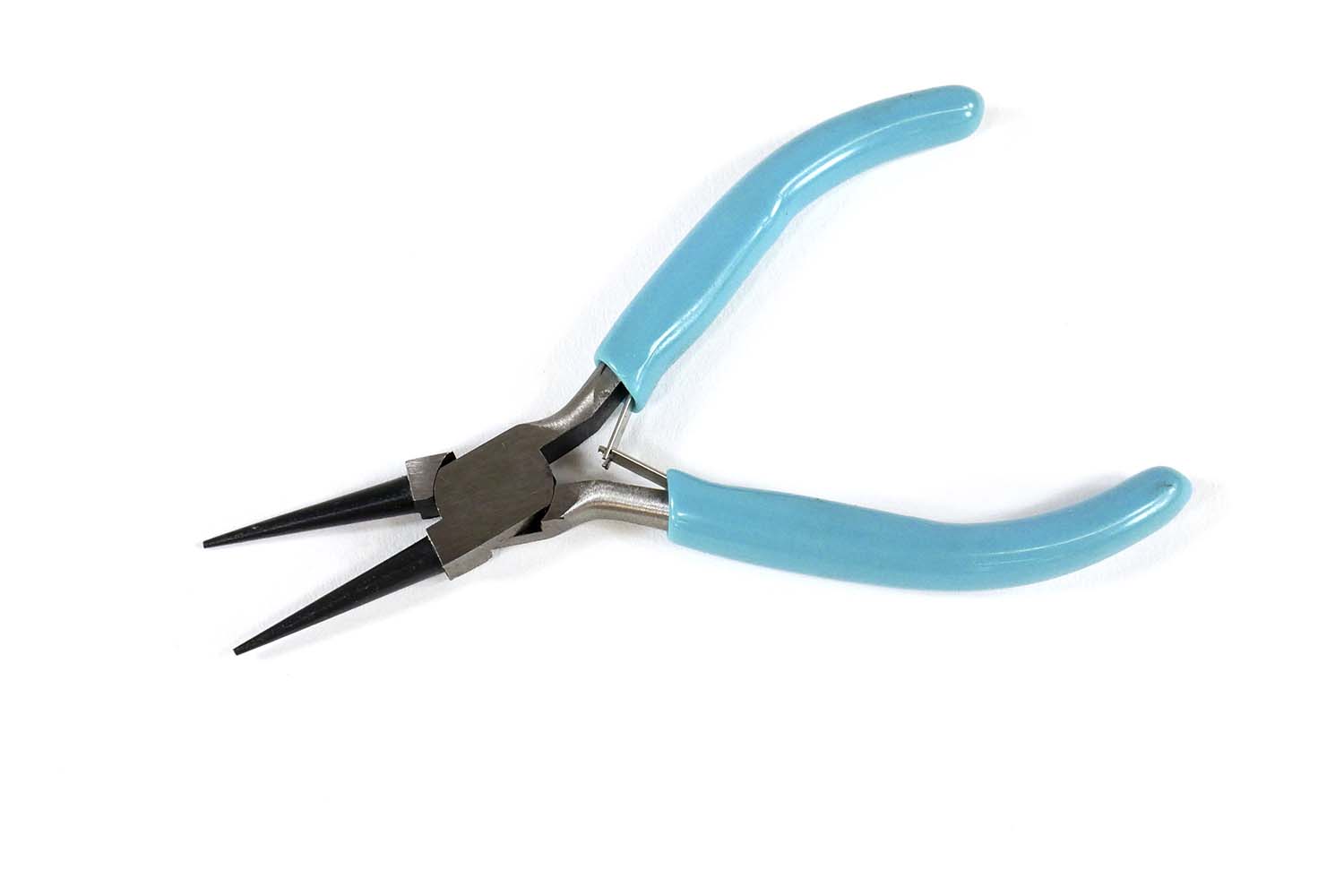- Jewelry-Making Supplies ▾
Design Jewelry with Confidence!
Seed Beads
Thread, Wire, & Stringing Materials
Findings & Components
Everything Else
- Kits & Collections ▾
Assemble Your World
Kits & Collections
- Subscriptions ▾
Want monthly Beading Happiness?
Subscriptions
- Learn to Make ▾
Want to learn more?
- Discounts & Deals ▾
Explore Today's Promotions!
-
Seed Beads
Thread, Wire, & Stringing Materials
Findings & Components
Everything Else
-
Kits & Collections
-
Subscriptions
- Home
- Resources
- Support/Resources Pages for Kits & Collections (hidden)
- DragonThread Support
- How Much Thread Do I Start with?
How Much Thread Do I Start with?
Step 2: Watch the
Video Tutorial
Step 2: Watch the
Video Tutorial
Step 3: Need More Help? Follow these Steps
Step 3: Need More Help? Follow these Steps

Quick Project Steps
Quick Project Steps
Preparing the Thread: Use a thread zap to cut the Wildfire thread from the spool, considering your project's requirements for thread length.
Thread Doubling Technique: For projects requiring more than 5 feet of thread, consider doubling the thread by attaching the needle to the middle of your thread length.
Managing Excess Thread: Use cardstock or business cards to wrap excess thread when working from the middle, securing with painters tape if necessary.
Concealing Knots: For projects where knots are difficult to conceal, start with longer threads to minimize the need for adding thread.
Using Leftover Thread: Save leftover threads that are at least 12 inches long for smaller projects or for adding clasps.
Step 4: Pick Your Own Colors
Step 4: Pick Your Own Colors
Step 5: Need Any Extra Materials?
Step 5: Need Any Extra Materials?
Step 5: Need Any Extra Materials?
Step 5: Need Any Extra Materials?
Step 6: Choose Your Next Project
Step 6: Choose Your Next Project
Step 6: Choose Your Next Project
Step 6: Choose Your Next Project
- Glasgow Rose Embroidered Pendant - DIY Jewelry Making Tutorial by PotomacBeads
- Glasgow Rose Embroidered Pendant - DIY Jewelry Making Tutorial by PotomacBeads
- Comet Earrings - DIY Jewelry Making Tutorial by PotomacBeads
- Flower Gem Earrings - DIY Jewelry Making Tutorial by PotomacBeads
- Embroidered Rings - DIY Jewelry Making Tutorial by PotomacBeads
Join Our Growing Community
Join Our Growing Community




Our Testimonials
Our Testimonials
Only Visible on Admin Mode
Item Description
Designer's Material List
Project Steps
Preparing the Thread: Use a thread zap to cut the Wildfire thread from the spool, considering your project's requirements for thread length.
Thread Doubling Technique: For projects requiring more than 5 feet of thread, consider doubling the thread by attaching the needle to the middle of your thread length.
Managing Excess Thread: Use cardstock or business cards to wrap excess thread when working from the middle, securing with painters tape if necessary.
Concealing Knots: For projects where knots are difficult to conceal, start with longer threads to minimize the need for adding thread.
Using Leftover Thread: Save leftover threads that are at least 12 inches long for smaller projects or for adding clasps.
Highest Quality
Products
100% Money
Back Guarantee
Fast
Shipping
Best Teaching &
Customer Service
You'll want these emails...
Get Free Projects & Inspiration
Get Free Projects & Inspiration
- Bullet 1
- Bullet 2
- Bullet 3
Copyright © PotomacBeads





-Transparent.png)

